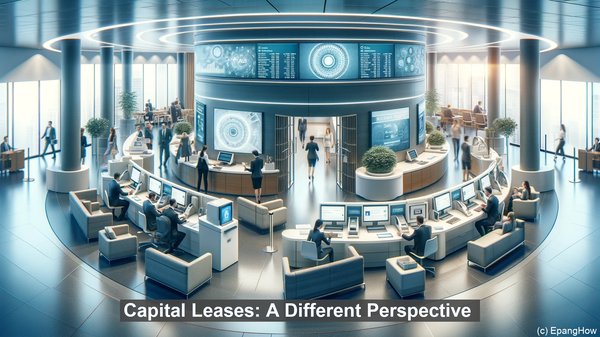Introduction: The Significance of Leases in Finance
Hello everyone, and welcome to today’s video. Leases are a fundamental aspect of the financial world, enabling businesses to acquire assets without the need for substantial upfront capital. In this video, we’ll focus on two primary types of leases: financial leases and capital leases. While they may seem similar at first glance, there are crucial distinctions that can impact a company’s financial standing. So, let’s dive in!
Defining Financial Leases: A Closer Look
A financial lease, also known as a true lease or an operating lease, is a type of lease agreement where the lessor (the owner of the asset) transfers most of the risks and rewards associated with ownership to the lessee (the party leasing the asset). In simpler terms, the lessee enjoys the benefits of using the asset, but the lessor retains ownership throughout the lease term. This arrangement is often used for high-value, long-term assets like machinery, vehicles, or even real estate.
Capital Leases: A Different Perspective
On the other hand, a capital lease, also referred to as a finance lease, is a lease agreement that’s structured in a way that the lessee assumes a significant portion of the risks and rewards associated with ownership. In essence, a capital lease is more like a purchase financed through installments. By the end of the lease term, the lessee usually has the option to buy the asset at a predetermined price, often referred to as the bargain purchase option.

Accounting for the Differences
From an accounting standpoint, financial leases and capital leases are treated differently. Financial leases are generally recorded as an asset and a liability on the lessee’s balance sheet, reflecting the lessee’s right to use the asset and the obligation to make lease payments. On the other hand, capital leases are treated as an acquisition of the asset, with both the asset and the corresponding liability recorded on the lessee’s balance sheet. This distinction can have significant implications for a company’s financial ratios and overall financial health.

Tax Benefits: A Consideration for Lessees
When it comes to tax benefits, the structure of the lease can make a difference. In a financial lease, since the lessor retains ownership, they are typically entitled to the tax benefits associated with the asset, such as depreciation deductions. However, in a capital lease, the lessee is often considered the owner for tax purposes, allowing them to claim certain tax benefits. It’s essential for businesses to consider these tax implications when choosing between lease types.
Lease Payments: A Comparison
The payment structure in financial leases and capital leases also differs. In a financial lease, the lessee typically makes regular lease payments, which may include both principal and interest components. These payments are often expensed on the income statement. In contrast, in a capital lease, the payments are structured more like loan repayments, with a portion going towards the principal and another portion as interest. This can impact a company’s cash flow and financial planning.
